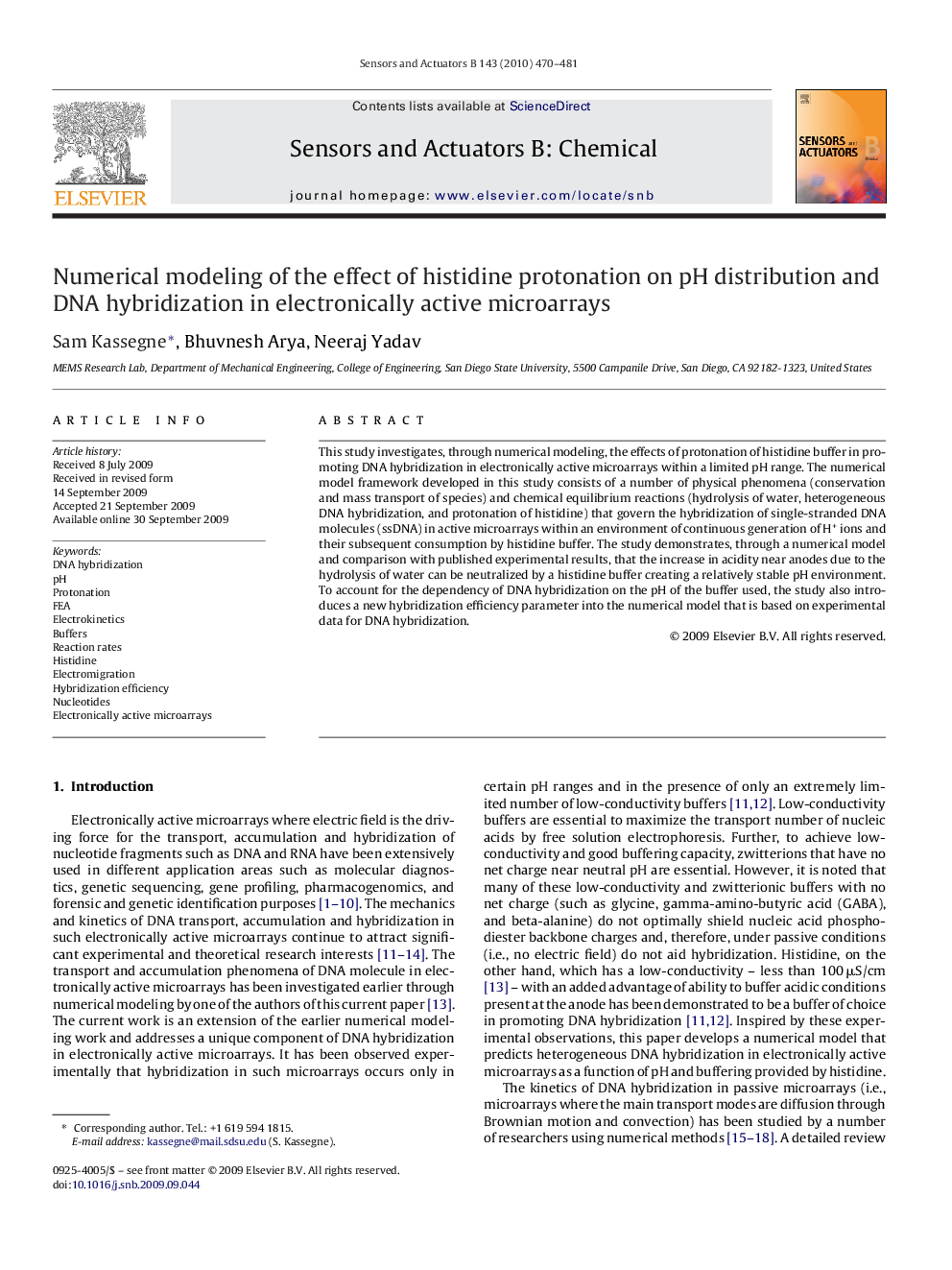| Article ID | Journal | Published Year | Pages | File Type |
|---|---|---|---|---|
| 742968 | Sensors and Actuators B: Chemical | 2010 | 12 Pages |
This study investigates, through numerical modeling, the effects of protonation of histidine buffer in promoting DNA hybridization in electronically active microarrays within a limited pH range. The numerical model framework developed in this study consists of a number of physical phenomena (conservation and mass transport of species) and chemical equilibrium reactions (hydrolysis of water, heterogeneous DNA hybridization, and protonation of histidine) that govern the hybridization of single-stranded DNA molecules (ssDNA) in active microarrays within an environment of continuous generation of H+ ions and their subsequent consumption by histidine buffer. The study demonstrates, through a numerical model and comparison with published experimental results, that the increase in acidity near anodes due to the hydrolysis of water can be neutralized by a histidine buffer creating a relatively stable pH environment. To account for the dependency of DNA hybridization on the pH of the buffer used, the study also introduces a new hybridization efficiency parameter into the numerical model that is based on experimental data for DNA hybridization.
